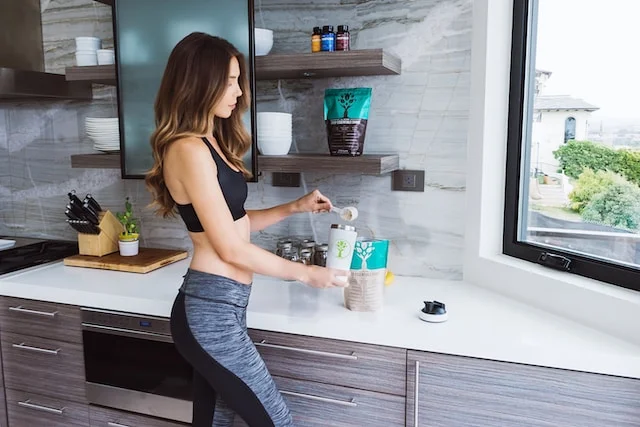Achieving a daily protein intake of 100 grams is a goal that many individuals pursuing fitness, sports, or overall health aim for. Protein is essential for muscle repair, immune function, and overall well-being. In this comprehensive guide, we will explore practical strategies to help you attain this protein target.
1. Diversify Your Protein Sources
a. Lean Meats and Poultry
Incorporate a variety of lean meats such as chicken breast, turkey, lean cuts of beef, and pork loin. These options are high in protein while being relatively low in fat.
b. Fatty Fish
Include fatty fish like salmon, mackerel, and sardines in your diet. These not only provide ample protein but also supply beneficial omega-3 fatty acids.
c. Plant-Based Proteins
Integrate plant-based protein sources like lentils, chickpeas, tofu, and quinoa. These options are not only rich in protein but also offer a host of essential nutrients.
2. Prioritize High-Protein Dairy
a. Greek Yogurt
Greek yogurt is an excellent source of protein. Opt for plain, unsweetened varieties to minimize added sugars.
b. Cottage Cheese
Cottage cheese is a protein-rich dairy option that can be consumed on its own, in salads, or as a topping.
c. Whey Protein
Consider incorporating a high-quality whey protein supplement, particularly post-workout, to boost your protein intake.
3. Opt for Eggs
Eggs are a versatile and nutrient-dense source of protein. Consider starting your day with eggs or using them as a protein-rich ingredient in various dishes.
4. Include Legumes and Beans
a. Lentils
Lentils are not only high in protein but also rich in fiber, making them an excellent addition to soups, stews, and salads.
b. Chickpeas
Chickpeas, also known as garbanzo beans, are versatile legumes that can be used in various dishes, from hummus to salads.
5. Snack Smartly
a. Nuts and Seeds
Snack on almonds, walnuts, chia seeds, and flaxseeds. They provide a source of protein along with healthy fats.
b. Greek Yogurt Parfaits
Create protein-rich parfaits by layering Greek yogurt with fruits and nuts. This makes for a satisfying and nutritious snack.
6. Plan Balanced Meals
a. Protein-Centered Plates
Ensure that each meal you consume has a protein source as its centerpiece. This can include a portion of lean meat, fish, tofu, or legumes.
b. Balanced Macros
Pair your protein source with healthy fats and complex carbohydrates. This provides a balanced and satiating meal.
7. Monitor Portion Sizes
a. Weigh and Measure
Initially, weighing and measuring your food can help you become more aware of portion sizes, ensuring you meet your protein goals.
b. Listen to Your Body
Pay attention to your body’s hunger and satiety cues. This can help prevent overeating or undereating.
8. Spread Your Protein Intake Throughout the Day
a. Include Protein in Every Meal
Distribute your protein intake across all meals and snacks. This helps maintain steady energy levels and supports muscle repair throughout the day.
b. Protein-Packed Snacks
Opt for protein-rich snacks like a small serving of cottage cheese, a handful of almonds, or a hard-boiled egg.
Making 100g of Protein a Day Attainable
Meeting a target of 100 grams of protein daily is achievable with careful planning and a diverse diet. By incorporating a range of protein-rich foods and monitoring portion sizes, you can support your overall health, fitness goals, and well-being.
Remember to consult with a healthcare professional or registered dietitian before making significant changes to your diet, especially if you have specific dietary needs or health concerns.






